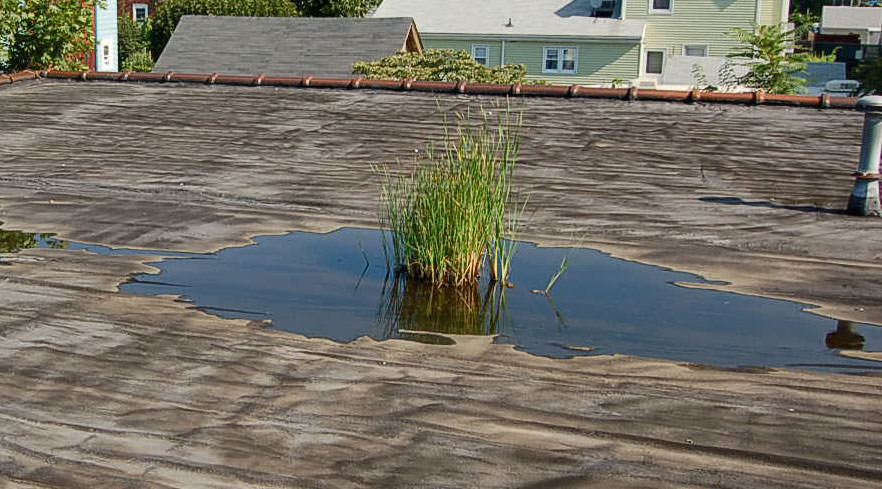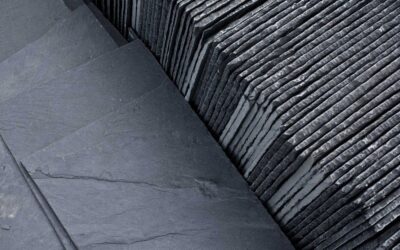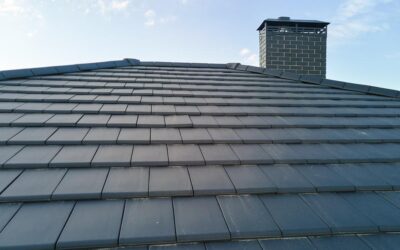Your flat roof is considered to have a ponding water issue when a pool of visible water still exists 48 hours after it has rained. This is a big problem because flat roofs are only designed to shed water, not hold water. Even so called “flat” roofs should contain a slight slope to achieve positive drainage.

Ponding water on a flat roof can have the following negative results:
- Where there is ponding water, there will be a collection of dirt on your roof. The collection of dirt in a certain area combined with ample water supply can lead to the growth of vegetation. Needless to say, this is not an ideal situation.
- When I was a kid, we used to take a magnifying glass and hold it up to the sun to burn a hole through a leaf. Ponding water acts as in the same way by increasing the damaging UV power from the sun for all components of the roofing system.
- All types of roof membranes will experience more rapid deterioration when submerged in water due to photo-oxidation.
- Ponding water challenges the ability of the adhesives to maintain their integrity and therefore compromises the integrity of the whole roofing system.
As a result of these negative effects of ponding water, most membrane warranties have an exclusion that will void the manufacturer’s warranty on your roof. Regardless of the warranty issue, it is sound practice to have a flat roof with positive drainage.
Ponding water will promote the growth of vegetation and mold, attract insects, void your warranty, and can cause serious structural damage to the building. If you think you have ponding water on your roof, clear all of your drains, gutters, and downspouts of debris. If the problem persists, call an experienced and qualified roofing contractor to diagnose and repair your roof before it becomes a worse and more costly issue.



